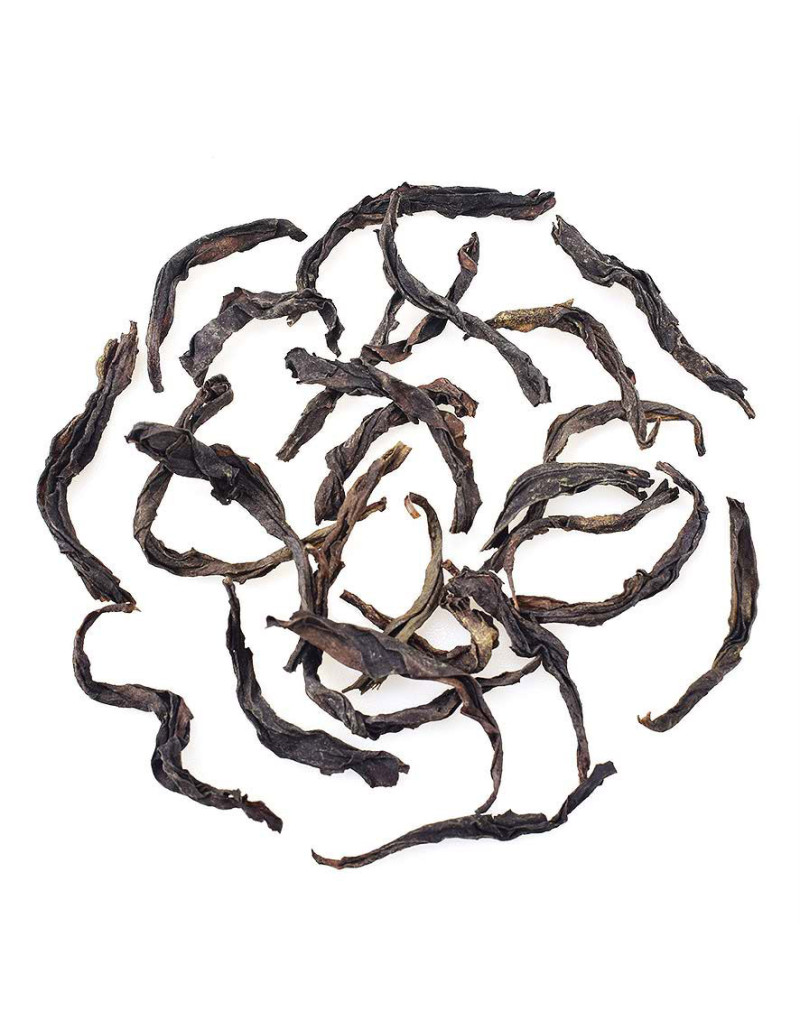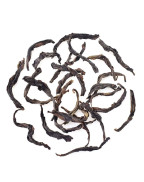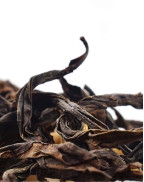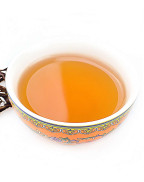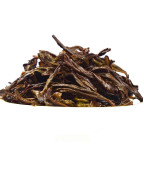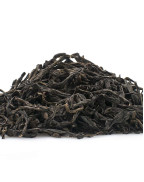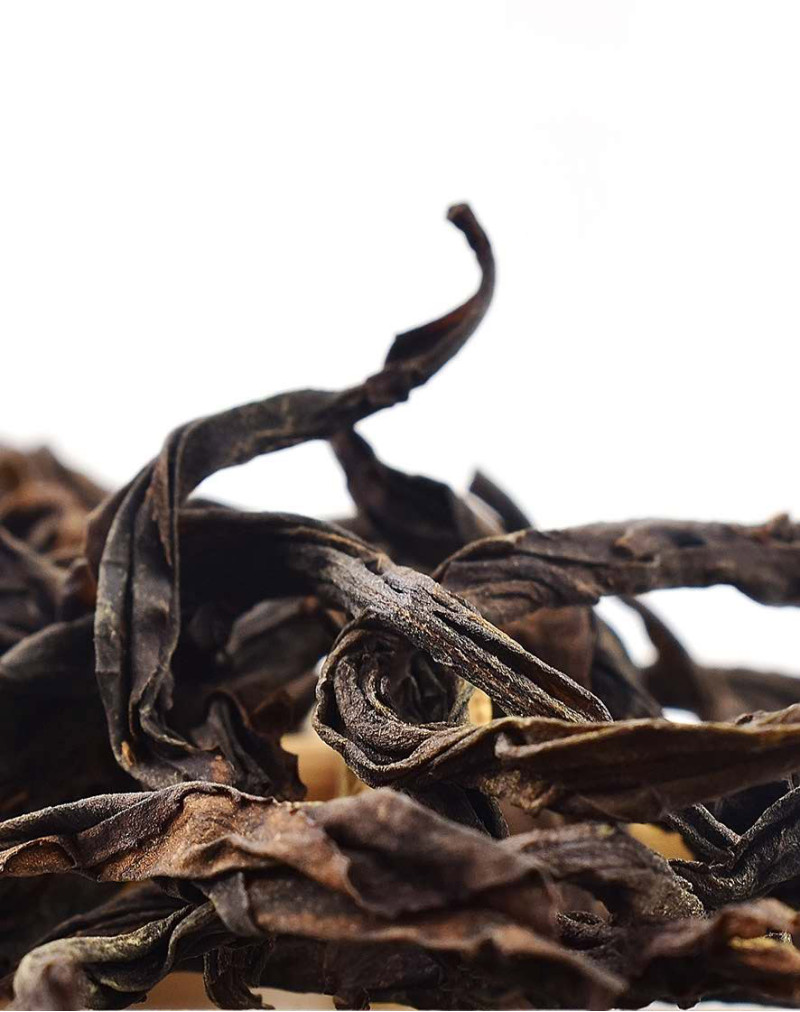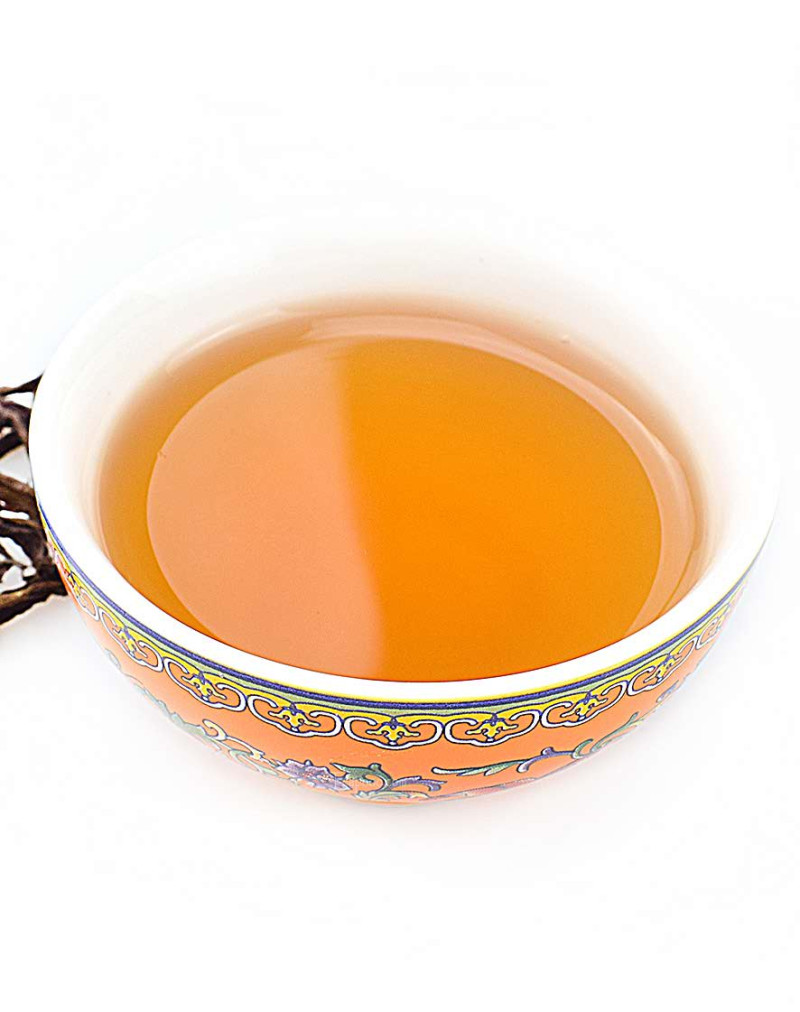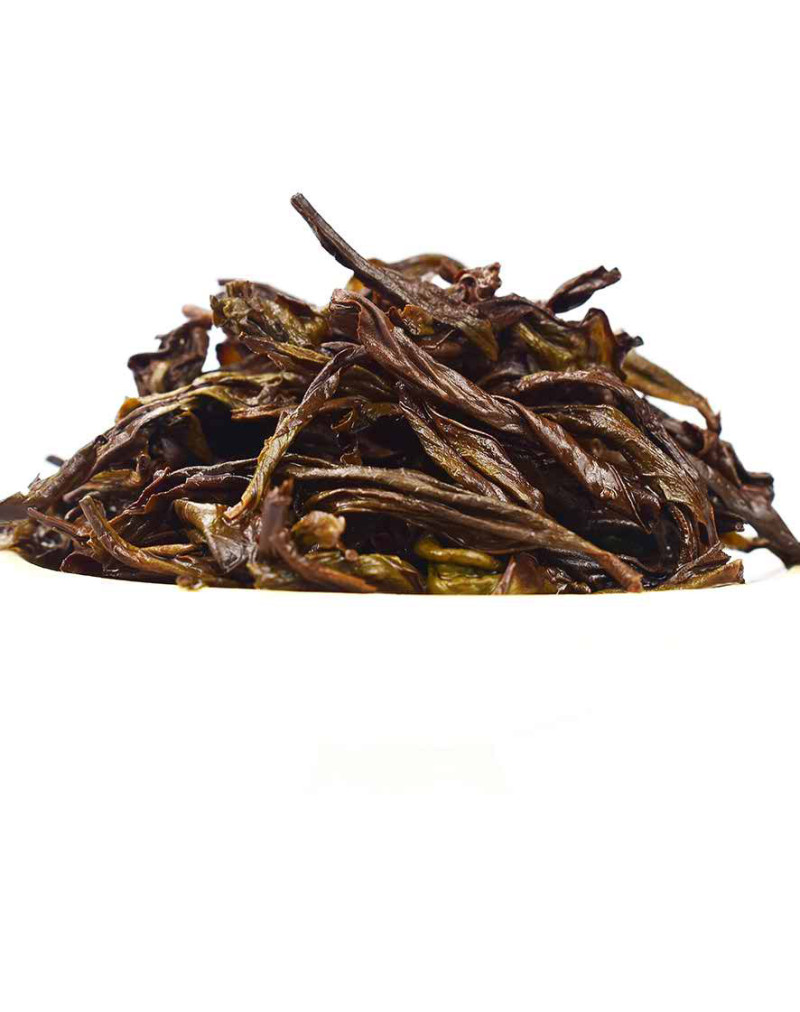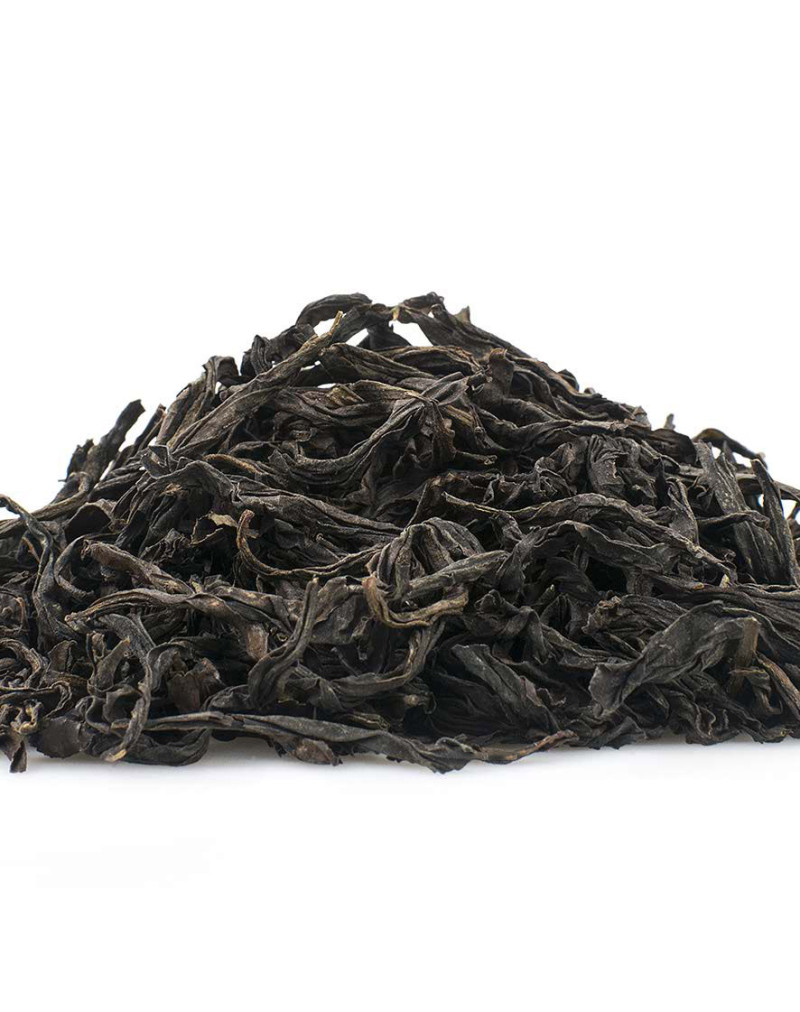Da Hong Pao (Big Red Robe) Wuyi Rock Oolong Tea
- Product Code: simple
- Availability: In Stock
Basic Info
Name: Da Hong Pao (Big Red Robe)
Category: Minbei Oolong tea
Origin: Wuyi Mountain,Fujian Province
Taste & Aroma: Rock flavor,roasting, orchid ,sweetness,long-lasting
Tea Garden: Xiaojiawan tea garden
Liquor: Bright orange soup
Dry Leaf: slightly twisted brown strips
Harvest Date:8th April, 2024
Fermentation: Moderate
Season: Spring tea
Item Form: Loose leaves
Ingredients: 100% hand-picked natural tea buds and leaves
Tea maker: Yang Daguo
Tree Species: Da Hong Pao
Degree of baking: Roasted lightly
Shelf Life: 24-36 months
Storage: Dtored in cool, airtight, opaque containers
Flavor: Unflavored
Caffeine: Middle
Da Hong Pao (Big Red Robe) Wuyi Rock Oolong Tea
Wuyi Rock Tea
Wuyi tea is a famous traditional tea in China and a kind of oolong tea, which has the quality characteristics of rock rhyme (rock bone and flower fragrance). It is mainly produced in Wuyishan, Fujian Province, which has beautiful scenery. It is also called "Wuyi Rock Tea" in China, because this kind of tea is rooted in the cracks in rock. Having the characteristics of green tea with delicate fragrance and has the sweet and mellow taste like black tea, Wuyi Rock Tea is sought after by many people and rated as the best of Chinese oolong tea. Wuyi rock tea is a semi-fermented oolong tea. It is fermented heavier than green tea but lighter than black tea. The most famous Wuyi rock tea is Da Hong Pao tea.
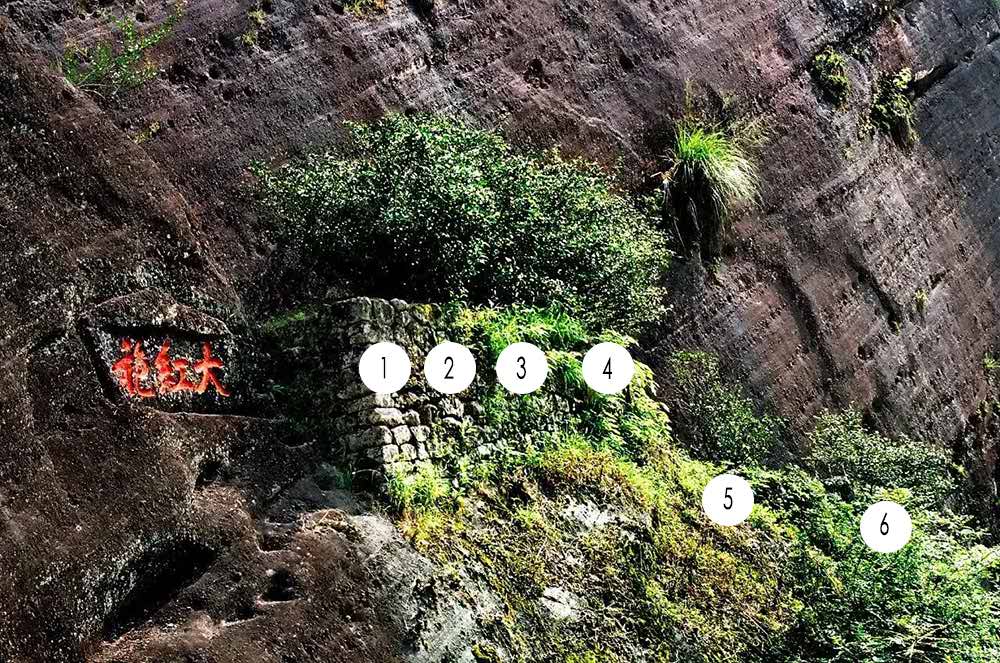
Da Hong Pao Mother Trees
Show Full Description
There is a long history of tea growing in the Wuyi Mountain area, with the earliest records dating back to the Shangzhou period (1600 BC - 256 BC). During the Western Han Dynasty (202 BC - 8 AD), tea production in the Wuyi Mountain area was quite common. According to historical records, in the Tang Dynasty (618 -907), Wuyi Tea was named "Wan Gan Hou".
The technology of tea making made great progress in Song Dynasty (960 - 1279). Tea was popular at that time, and tea became an indispensable thing in People's Daily life. At that time, there were more than 100 varieties of tea, dozens of which were used as "tribute tea", as a part of Beiyuan tribute tea was transported to Jianzhou (now Jian 'ou city, Fujian Province).
In order to supervise the production the administrative body of the Yuan Dynasty (1271—1368) set up "Baking bureau" and "Imperial tea Garden" on Mount Wuyi, which lasted for 255 years. In the end of Ming Dynasty (1368-1644) and the beginning of Qing Dynasty, due to the continuous innovation of processing methods, oolong tea was born. There were many kinds of tea varieties grown in Wuyi Moutain area during that period, some of them are very rare.
Wuyi rock tea flourished in the Qing Dynasty. In addition to Wuyi rock tea, black tea and green tea were also produced in the Wuyi Mountain area. Wuyi tea was exported. In 1607, the Dutch East India Company purchased Wuyi tea from China and resold it to all parts of Europe through Java. After several decades, Wuyi tea had developed into an indispensable drink for some Europeans. At that time, some Europeans called Wuyi tea "Chinese tea".In the earliest English tea literature, "Bohea" means the transliteration of "Wuyi".
Fujian
Fujian Province is located on the southeast coast of China, facing the Taiwan Strait. It is a coastal province that borders Zhejiang to the north, Guangdong to the south, and Jiangxi to the west. Fujian Province is known for its scenic coastal areas, rich history, and cultural heritage, and it is also one of the most important tea-producing regions in China.
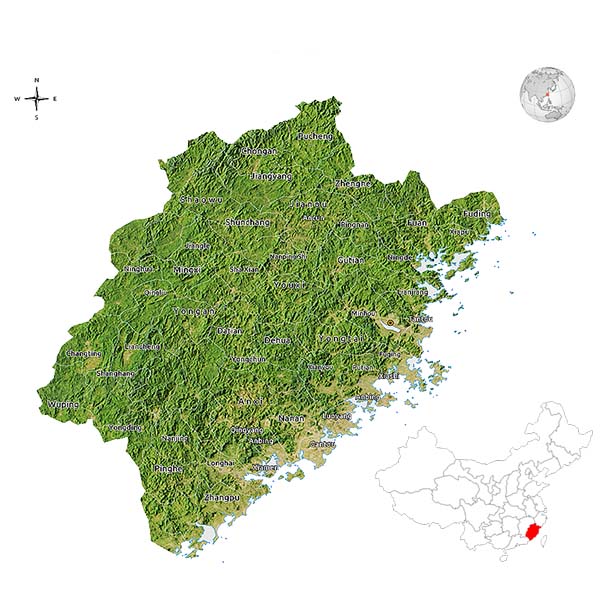
Fujian Province has a long history of tea cultivation and production, dating back over 1,000 years. The province is known for producing a wide range of tea varieties, including white tea, black tea, oolong tea, and scented tea. Some of the most famous teas from Fujian Province include Tie Guan Yin, Da Hong Pao, Bai Hao Yin Zhen, and Lapsang Souchong.
The tea-growing regions of Fujian Province are located mainly in the southeastern part of the province, in areas with a mild climate and fertile soil. The province's mountainous terrain, combined with its subtropical climate, provides ideal growing conditions for tea plants. Tea is grown on terraced hillsides, with some tea gardens located at elevations of up to 1,000 meters above sea level.
Fujian Province's tea industry is known for its traditional processing methods, which have been handed down through generations of tea makers. These methods involve withering, rolling, fermentation, and firing, and they are used to produce teas with unique flavors, aromas, and appearances.
Brief introduction to Da Hong Pao
Da Hong Pao (Big Red Robe, 大红袍) is a marvelous mountain-grown rock tea grown in the Wuyi Mountains of Fujian Province, China. Modern research has shown that Da Hong Pao tea contains caffeine, theophylline, tea polyphenols and flavonoids. For these and several other reasons, Da Hong Pao tea is considered beneficial to health. Traditional Chinese medicine believes that drinking Da Hong Pao can relieve fatigue, improve blood circulation and slow down the aging process.
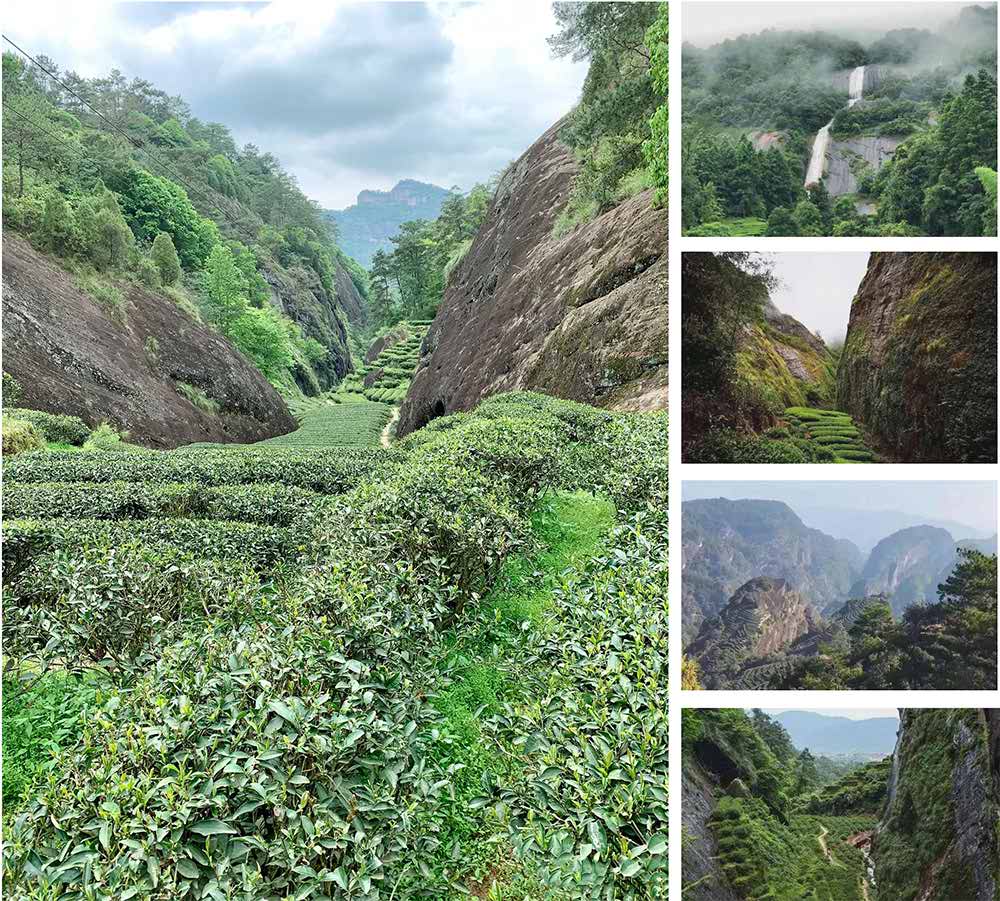
Wuyi Mountain Rock Tea Tea Garden
Looking For The Mother Trees of Da Hong Pao Tea
Wuyi rock tea has a long history, and Da Hong Pao tea is the most famous Wuyi rock tea. Legend has it that the name Da Hong Pao first appeared in the late Ming and early Qing dynasties. But the process of discovering and documenting the Da Hong Pao mother tree is much more difficult than one might think.
According to folklore and historical records, there were three places on Mount Wuyi where Da Hong Pao tea trees grow. But after years of field visits and investigations, experts have only verified one of them - - - the place now called Tianxin Yan Jiu Jiu (which is located near the cliff inscribed with the word "Da Hong Pao" which are said to be carved by the monks of Tianxin temple in 1927) - - - where experts have found six Da Hong Pao mother tea trees growing on the cliff.
Starting from the first tree on the upper layer beside the stone inscription, the four trees on the upper layer (historically known as the 正本original) were numbered as No. 1, No.2, No.3 and No. 4 respectively. The middle tree is numbered 5 and the bottom tree is numbered 6.
According to the investigation, these mother trees are all over 360 years old. Although they belong to the same species, there are differences between individuals due to long-term natural hybridization and evolution. Broadly, these six trees were divided into three different lines.No.3 and No.4 matured earlier, No.2 and No.6 matured in the middle, and No.1 and No.5 matured the latest. Although these three groups of teas grow in the same place, they are obviously different in shape and taste.
Precious Da Hong Pao Tea
The tea sage Lu Yu once wrote in his book The Class of Tea that tea grown on weathered rocks are of the best quality. Modern research shows that weathered rock soil has strong permeability and is rich in minerals, which is very suitable for the growth of tea trees. These six rare and precious Da Hong Pao mother trees grow on the weathered rocky soil and are irrigated by mountain spring water, so the quality is exceptionally good.
The mother tree Da Hong Pao is known as the "king of tea". It is said that the mother tree Da Hong Pao tea was carefully stored in the bank vault after being produced. If you want to take it out, you must go through a very strict procedure, because it is too precious! Before the 1980 s, the six Da Hong Pao trees produced only 300 or 400 grams of tea a year.
During the Cold War, when U.S. President Richard Nixon visited China in 1972, Chairman Mao gave him 200g of Da Hong Pao tea as a gift. It is rumored that he wondered why Chairman Mao gave him only such a small amount of tea. What he didn't know was that the annual output of Da Hong Pao was only about 400 g at that time.
In ancient China, only the emperor could drink Da Hong Pao tea. In the Qing Dynasty, the mother trees produced only about 500 grams of tea a year, and even the powerful Emperor Qianlong drank only 400 grams of Da Hong Pao a year. During the Republic of China period, the market value of 500 grams of Da Hong Pao reached 64 silver Yuan, equivalent to 2400 kg of rice at that time.
These six Da Hong Pao mother trees are therefore particularly rare. In the 1930 s, the Da Hong Pao mother tree was guarded by soldiers. After the founding of new China, there were at most 30-40 soldiers guarding these six Da Hong Pao mother trees. In the 21st century, the public security environment has obviously improved. Now they are under the care of experienced farmers.
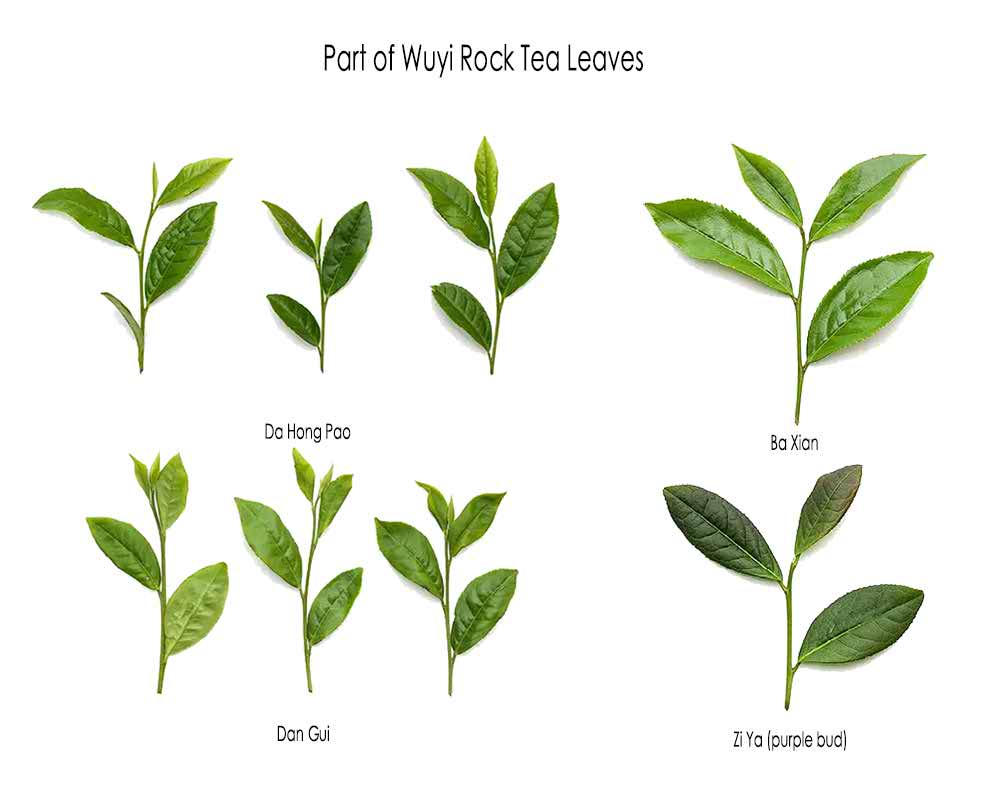
Part of Wuyi Rock Tea leaves
A few years ago, 20 grams of Da Hong Pao Mother tree tea was sold at a market auction for 156,800 yuan (about $ 30,000), setting a record price in the tea market.
In 2000, Mount Wuyi was successfully declared as a "World Natural and Cultural Heritage", and the mother Da Hong Pao tree was listed as a key object of protection. In 2003, Wuyishan municipal government insured Da Hong Pao mother tree with liability insurance of 100 million RMB.
Later, the six Da Hong Pao mother trees produced only about 20 grams of tea a year, which became even more rare. In 2006, the six Da Hong Pao mother trees were banned from being picked for conservation. In 2007 and 2005, the last 20 grams picked from mother tree were handed over to the National Museum for collection. Since then, the precious mother tree Da Hong Pao tea has disappeared from the market. The Da Hong Pao tea on the market now is propagated from the cuttings of Da Hong Pao mother tree, which is an extension of mother tree, so it is also called "Da Hong Pao".
The Madness of Da Hong Pao
In the 21st century, there was a period when the price of Da Hong Pao tea and other famous teas rose to unbelievable levels, driven by capital operations and deliberately hyped by illegal merchants. The price of Da Hong Pao tea in particular is incredibly high. These expensive teas are no longer a drink, but a luxury, more like a gambling tool controlled by capital. Under the strict supervision of the government, the rising trend of Da Hong tea prices has been curbed and gradually returned to normal.
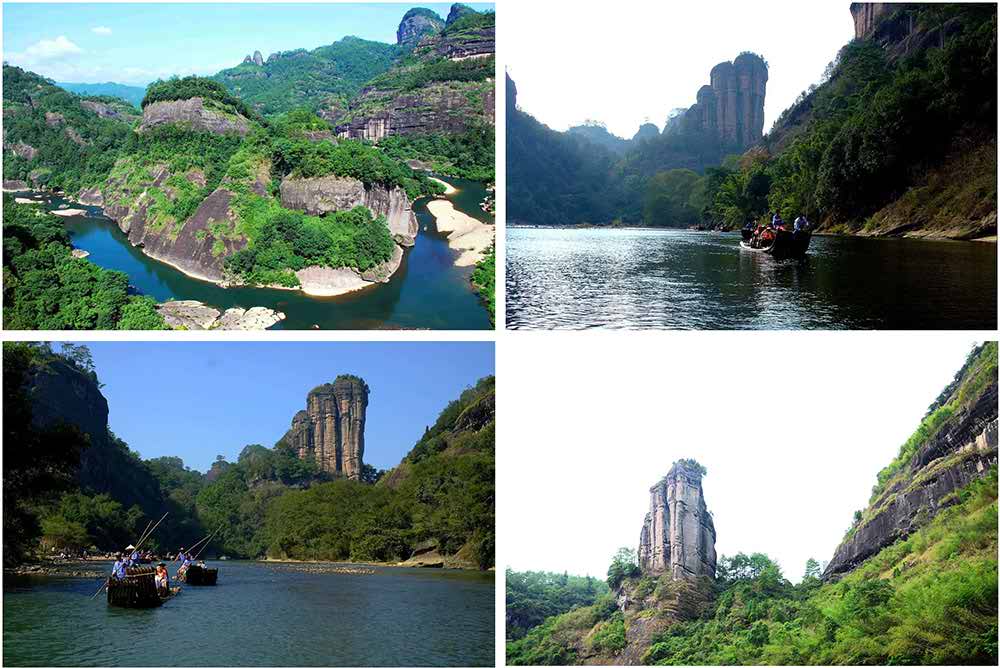
Topography Of Mount Wuyi
Rebirth - The Commodity Bushes
Fortunately, through the unremitting efforts of several generations of researchers, as early as 1980s, researchers of Fujian Academy of Agricultural Sciences began to take cuttings from mother trees for asexual propagation. Their plan succeeded. These new-born tea plants are basically the same as their mother plants, even after many generations. In 1988, tea experts judged that these "cloned" tea trees were the same as their mother trees in terms of tea quality. These "cloned" tea trees maintain the characteristics of the mother Da Hong Pao tree, but teas from these cloned bushes are much cheaper than those from the mother tree Da Hong Pao.
In other words, Da Hong Pao tea you can buy today comes from purebred or commodity bushes, from clippings of the original bushes, or from a blend of Rou Gui and Shui Xian and other famous Wuyi cultivars.
True and False
Wuyi Rock tea has various variants which makes it difficult for ordinary consumers to tell whether they are buying authentic Da Hong Pao tea. The taste of Da Hong Pao tea also has a lot to do with its growing environment, picking time, producer's experience and brewing method so it is necessary to find an honest and reliable seller. The only thing that is certain is that good Da Hong Pao tea should be pleasing in both shape and taste.
Origin of The Name
In 1385, in the 18th year of Hongwu in the Ming Dynasty, Ding Xian, a scholar, was on his way to the capital to take part in the national examination. When he passed Wuyi Mountain, he suddenly fell ill and suffered from abdominal pain. He happened to meet a monk of Tianxin Yongle Zen temple.After drinking the tea offered by the monk, his pain ceased.
After winning the first prize in the exam and being awarded a senior official, he came to thank the monk and asked about the origin of the tea. After learning that, he took off his own red robe (red robe was the symbol of powerful people and glory at that time) and wrapped it around the tea tree three times, so this tea got the name "Da Hong Pao". He then took the Da Hong Pao tea in a tin can and brought it back to the capital.
When he returned to the capital, the Queen fell ill and could not find a solution. He gave the pot of tea to the queen, who gradually recovered after drinking the tea.
When the emperor learned of this matter, he gave the scholar a red robe and let him personally go to the Wuyi Mountain where the tea tree grows to express his gratitude. From then on, every year, the tea picked from this tree should be given to the emperor, and it is not allowed to hide it privately. Since then, Wuyi rock tea Da Hong Pao has become a tribute tea exclusively for the royal family to enjoy, and the fame of Da Hong Pao has become bigger and bigger.
There is also a saying about monkeys, because these tea trees are born on cliffs and it is difficult for tea pickers to climb up. Whenever they pick tea, they will burn incense to worship the heaven, and then let monkeys in red waistcoats climb on the tea trees on cliffs to help pick tea.
Processing Method
The production process of Da Hong Pao is a combination of green tea and black tea, and it is the most complicated tea with the most procedures and technical requirements.
The basic manufacturing process includes:
Picking: Da Hong Pao is picked once a year, generally in May and June. The standard for picking fresh leaf is 1 bud and 2-4 leaves. The leaves should be neither too old nor too tender, and should be avoided as much as possible on rainy days and when there is dew in the morning.
Withering: the picked tea leaves are spread evenly in the sun, using sunlight and breeze to evaporate the water. Withering is the process by which fresh leaves lose water and is crucial to the development of the Da Hong Pao flavor and its full flavor.

The Processing Steps Of Wuyi Rock Tea
Rotating/rocking of green leaf: This step is an important stage in the development of the quality of Da Hong Pao. It is a combination of continuous withering and fermentation, which is highly technical. On the one hand, it should promote the enzymatic oxidation of polyphenols in tea, on the other hand, it should limit the speed of oxidation reaction. Therefore, in order to do this step, we must use the unique gesture. The tea leaves are shaken and twisted in a large bamboo sieve. This may help the oxidation of polyphenols in tea. This time-consuming step is the most crucial part to form the fragrance, taste and rhyme of Da Hong Pao.
Stir fixation(frying green):The principle of frying green tea is basically the same as that of green tea. That is, through high temperature, in a relatively short time to destroy the activity of polyphenol oxidase, stop enzymatic oxidation, prevent the green leaves continue to oxidize.
Rolling: Mainly to form the shape of Da Hong Pao tea
Baking: This step involves putting the tea leaves in a big basket, heating and drying the tea leaves at different temperatures, which usually takes several hours. This step is used to consolidate the shape of the tea, which is beneficial to their long-term preservation.
Characteristics
This good-quality Da Hong Pao has the characteristic 'rock 'flavor from the mineral rich hills of the protected Wuyishan nature reserve. Dried leaves are shaped like tightly knotted ropes or slightly twisted brown stripes. After brewing, the large dark leaves brew bright orange soup that demonstrates complex fragrance of orchid with woody roasting aroma, finished with subtle sweetness, giving you a smooth and long-lasting satisfying aftertaste. This enduring rock tea can reach up to more than 10 infusions when brewed with traditional Chinese Gongfu ways.
This tea is best brewed in a porcelain vessel, like a Chinese Gaiwan or in a traditional yixing purple clay teapot.
| Chinese Gongfu Method | |
| Tea | 6g |
| Water | Gaiwan 3oz / 90ml |
| Time | 8 steeps (rinse,25s,30s,40s,60s,1m30s,2m,2m30s,3m,4m) |
| Temperature | 100℃/212℉ |
| Teapot Method | |
| Tea | 8g |
| Water | Teapot (8oz / 240ml) |
| Time | 1- 5mins |
| Temperature | 100℃/212℉ |


